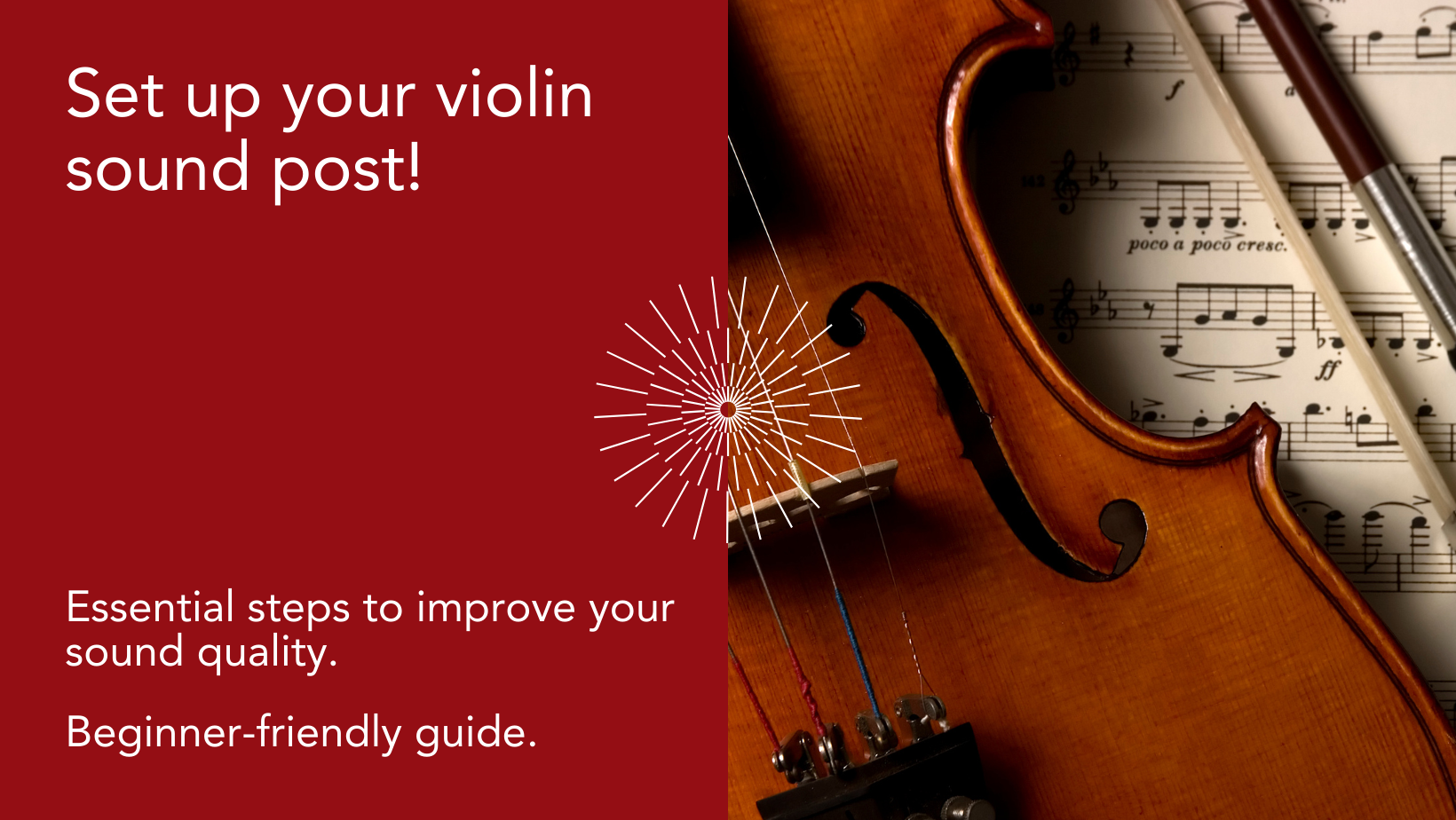Introducing the critical component in the heart of a violin’s sound, the sound post is a small but vital part of the instrument’s anatomy, influencing tone, balance, and playability.
As experts in violin craftsmanship, Ricard Bunnel aims to demystify the process of setting up a sound post, ensuring enthusiasts and professionals alike can understand and appreciate this delicate task.
Understanding the Sound Post
The sound post, often referred to as the “soul” of the violin, is a small wooden dowel located inside the violin between the front and back plates, beneath the treble side of the bridge. Its placement and fit are paramount to the instrument’s sound production and overall health.
The Role of the Sound Post
It’s crucial to recognize how the sound post affects sound quality. Its position, even by millimeters, can dramatically change the instrument’s tone, responsiveness, and projection. The sound post transmits vibrations from the top plate to the bottom, enhancing the violin’s resonance and balancing its sound.
Tools and Preparation
Before diving into the setup, ensure you have the right tools: a sound post setter, a light source, and a protective cloth for the violin’s surface. Understanding the violin’s anatomy and gently handling each component is crucial for a successful setup.
Step-by-Step Guide to Setting Up the Sound Post
1. Assessing Position and Fit
The standard position for the sound post is slightly behind the right foot of the bridge, but the exact spot varies for each violin. The sound post should fit snugly between the top and back plates without being too tight or too loose.
2. Installing the Sound Post
Carefully insert the sound post inside the violin through the f-hole using the sound post setter. Maneuver it to the correct spot, ensuring it stands upright and perpendicular to the plates.
3. Adjusting for Sound
After the initial placement, play the violin to assess the sound. Adjustments might be necessary to fine-tune the instrument’s tone. Minor shifts in the sound post’s position can lead to significant changes in sound quality.
4. Professional Tips and Tricks
Consider the wood’s age and quality, the violin’s unique characteristics, and environmental factors. Each violin is different, and what works for one might not suit another. Patience and a delicate touch are crucial.
Common Issues and Troubleshooting
Addressing common problems such as a fallen or shifted sound post, understanding when it’s time for a replacement, and knowing the signs of an improperly fitted sound post are essential for maintaining the violin’s sound integrity.
When to Consult a Professional
While many musicians learn to adjust their sound post, there’s no substitute for professional expertise. Complicated adjustments, repairs, or if you’re unsure about the process, it’s always best to consult a luthier.
Conclusion
Setting up a violin sound post is a delicate art requiring precision, patience, and a deep understanding of the instrument. With the right tools and knowledge, musicians can greatly influence their instrument’s voice. However, the unique complexities of each violin mean that sometimes, the expert touch of a professional is invaluable.

Leave a Reply